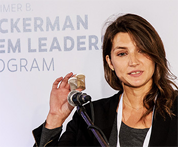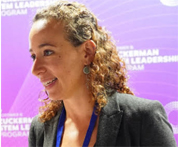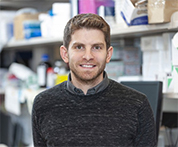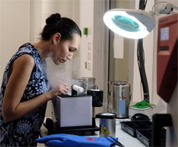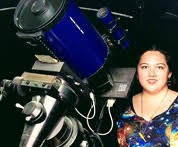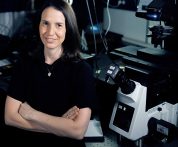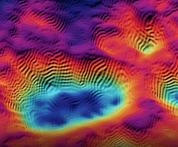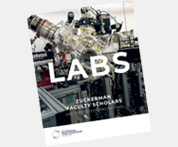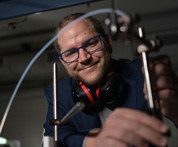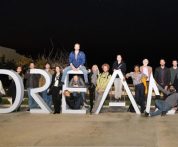New Israeli blood test can diagnose bipolar disorder
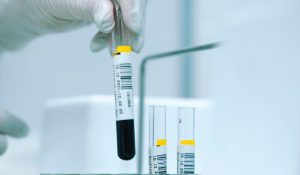
WHO: Zuckerman Scholar Dr. Shani Stern, University of Haifa
WHY IT MATTERS:
Bipolar disorder (formerly known as manic depression) is a psychiatric illness that causes unusual shifts in a person’s mood, energy, activity levels, and concentration. These shifts can make it difficult to carry out day-to-day tasks.
Not only can the test diagnose bipolar within only a few days and at a relatively low cost, but it can also predict the efficacy of lithium allowing psychiatrists to adjust the medication individually. Due to the strong similarity between manic depression and other disorders like schizophrenia, there is a risk of misdiagnosis, at least in the early stages. There also has been no way to know in advance whether or not lithium will help an individual patient. This method can enable people coping with psychiatric disorders to save many months of suffering by adjusting the right medication for them.
READ ABOUT IT: Jerusalem Post / Nature
The possible key to longevity and metabolic health in vertebrates
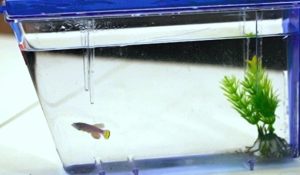
WHO: Zuckerman Scholar Dr. Itamar Harel, The Hebrew University of Jerusalem
WHY IT MATTERS:
A new study of metabolic health in vertebrates could be the key for developing interventions to combat age-related metabolic diseases and enhance healthy aging. These far-reaching implications significantly advance our understanding of the intricate interplay among energy metabolism, aging and lifespan regulation. Aging is commonly associated with disruptions in metabolic homeostasis, which contribute to various health issues. The AMP-activated protein kinase (AMPK) plays a critical role in cellular energy regulation and organismal metabolism. Previous attempts to genetically manipulate the AMPK complex in mice yielded unfavorable outcomes.
Using the turquoise killifish, the team targeted and mutated APRT, a key enzyme involved in AMP biosynthesis. The study unravels the intricate interplay between energy metabolism, aging, and lifespan regulation, offering exciting possibilities for the development of interventions to combat age-related metabolic diseases and enhance healthy aging.
READ ABOUT IT: Jerusalem Post / Developmental Cell
Important advance in super-resolution imaging of dynamic processes in live cells
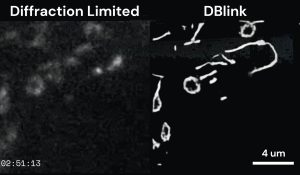
WHO: Zuckerman Scholar Prof. Yoav Shechtman, Technion – Israel Institute of Technology
WHY IT MATTERS:
Single-molecule localization microscopy (SMLM) has revolutionized biological imaging, improving the spatial resolution of traditional microscopes by an order of magnitude. However, SMLM techniques require long acquisition times, typically a few minutes, to yield a single super-resolved image, because they depend on accumulation of many localizations over thousands of recorded frames. Hence, the capability of SMLM to observe dynamics at high temporal resolution has always been limited. In this work, Yoav and his team present DBlink, a deep-learning-based method for super spatiotemporal resolution reconstruction from SMLM data. The input to DBlink is a recorded video of SMLM data and the output is a super spatiotemporal resolution video reconstruction.
DBlink’s spatiotemporal interpolation constitutes an important advance in super-resolution imaging of dynamic processes in live cells.
READ ABOUT IT: Phy.org / Nature / Youtube
Discovery of a polymer that emits heat when exposed to LED light
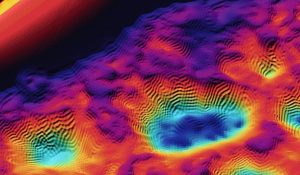
WHO: Zuckerman Scholar Dr. Yossi Weizmann, Ben-Gurion University of the Negev
WHY IT MATTERS:
The discovery enables the creation of new materials and the acceleration of reactions that may even save energy. Materials that catalyze faster can be used in a wide range of fields, including pharmaceuticals and future Mars habitats. Its chemists have come together to combine their expertise and produce new responsive polymers. This new method of catalyst activation was proven to be remarkably more efficient than activation through conventional heating in all the metathesis processes (chemical reactions in which one part of each two compounds interchange to form two new compounds) tested.
READ ABOUT IT: Jerusalem Post / Nature
1-New avenues for enhancing acoustic performance with carbon nanomaterials
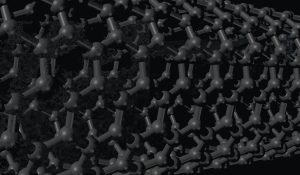
WHO: Zuckerman Scholar Associate Prof. Gili Bisker, Tel Aviv University
WHY IT MATTERS:
This research could help design and improve systems capable of storing multiple target structures and reproducing them, for example adaptive materials that can manage in different structures depending on external conditions. In particular, the reduction of the necessary initial structures, as shown in the study, can form the basis for a more efficient storage of information through complex systems.
READ ABOUT IT: Science Direct
2-New optical sensor for monitoring the formation of blood clots

WHO: Zuckerman Scholar Associate Prof. Gili Bisker, Tel Aviv University
WHY IT MATTERS:
Blood coagulation is a critical defense mechanism against bleeding that results in the conversion of liquid blood into a solid clot through a complicated cascade involving multiple clotting factors. One of the final steps in the coagulation pathway is the conversion of a protein called fibrinogen to insoluble fibrin mediated by thrombin. Since coagulation disorders can be life-threatening, the development of novel methods for monitoring the coagulation cascade dynamics is of high importance.
The Bisker lab developed a unique method to observe and understand how blood clots form in real time. They used tailored nanoparticles, single-walled carbon nanotubes (SWCNTs), that emit fluorescence in the near-infrared range. By incorporating the SWCNTs into the fibrin clot, the SWCNTs fluorescence could be used to track the clotting process by near-infrared imaging. This method can open new opportunities for coagulation disorder diagnostics and help us to better understand the coagulation cascade.
READ ABOUT IT: ACS Publications
Gait event detection is crucial for assessing walking patterns, developing assistive tools

WHO: Zuckerman Scholar Assistant Prof. Arielle Fischer, Technion – Israel Institute of Technology
WHY IT MATTERS:
Real-time gait event detection has the potential to facilitate the development of assistive tools, such as wearable devices that provide biofeedback to correct walking pattern deviations through vibration, visual, or auditory cues.
This study consists of two phases. In the first phase, a novel gait detection wearable device was developed and validated for detecting heel-strikes in comparison to a force-plate. Ten participants were enrolled in the validation phase, resulting in the collection of 218 heel-strike events. The second phase evaluated the effects of a gait-synchronized intermittent vibration wearable device on ankle kinematics and kinetics.
 ISRAELI COUNCIL FOR HIGHER EDUCATION
ISRAELI COUNCIL FOR HIGHER EDUCATION MIT-Israel Zuckerman STEM Fund for Faculty Collaboration
MIT-Israel Zuckerman STEM Fund for Faculty Collaboration The Zuckerman Travel and Research STEM Fund at Harvard
The Zuckerman Travel and Research STEM Fund at Harvard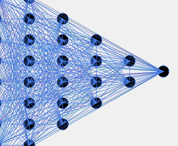 Zuckerman AI Fund at Technion
Zuckerman AI Fund at Technion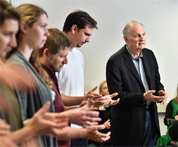 Alan Alda Communicating Science
Alan Alda Communicating Science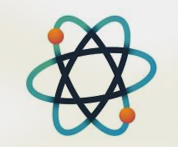 Zuckerman Institute – ScienceAbroad
Zuckerman Institute – ScienceAbroad Zuckerman Institute – America-Israel Friendship League partnership
Zuckerman Institute – America-Israel Friendship League partnership
